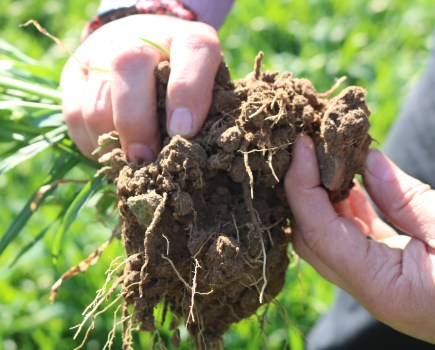A pioneering new approach to tackling viruses in sugar beet, which could herald a major breakthrough for all plant viruses, has been awarded grant funding. Tom Allen-Stevens reports.
A leading John Innes Centre researcher and colleagues have been awarded European funding to develop innovative molecular solutions to combat beet yellows virus (BYV).
Dr Yiliang Ding received the European Research Council Proof of Concept grant worth £150,000 to carry forward the RNA-based approach.
It’s hoped this could be used to help tackle the virus that can cause yield losses of over 50% and poses a significant threat to the European sugar beet industry, worth €3.6bn. Growers currently have few alternative measures to tackle the problem, following the withdrawal of neonicotinoid pesticides from the crop across the EU in 2018.
The ultra-RNA approach developed by Yiliang’s group captures the shape of the viral RNAs inside plants and uses this knowledge to design specific artificial small interfering RNAs to target and degrade the virus.
“We are applying our recent fundamental discoveries into the specific type of RNAs – viral RNAs,” says Yiliang. “RNA science is one that is just emerging, but it is gathering momentum and there’s a lot of expertise here at John Innes Centre. This could be a big breakthrough in how we tackle all plant viruses. But we haven’t yet passed the proof-of-concept stage.”
That’s the aim of this project, and Yiliang believes her team will know whether the technology will deliver on its promises within a year. “If all goes well, we will then develop field assays and there’ll be 2-3 years of trials before we’ll look to commercial partners to take it through approvals – the regulatory process for these structure-guided artificial small interfering RNAs has still not been decided,” she points out.
The technology is not GMO, however. What the researchers develop are small interfering RNAs with a design based on the shape of their targeted viral RNAs, that recognise and clean the virus. The research team believe they can provide a high-efficiency and environmentally friendly method for controlling BYV.
“The process is very specific so completely safe to non-target organisms. Small interfering RNAs will not affect the sugar beet genome and are gone in 24-48 hours. So we’re not changing anything in the plant genome – it’s more like an RNA-based therapy for plants.”
So why was BYV chosen? “During a growing season, plants are often infected by multiple viruses at the same time. For instance, beet mild yellowing virus (BMYV) is frequently found along with BYV in the same sugar beet plant. Our method is capable of targeting multiple viruses at the same time, enhancing the effectiveness of this approach,” explains Yiliang.
Multiple application methods are being assessed. Small interfering RNAs could potentially be applied into the field by delivery techniques such as within the seed coating or via nanoparticles within a spray.




